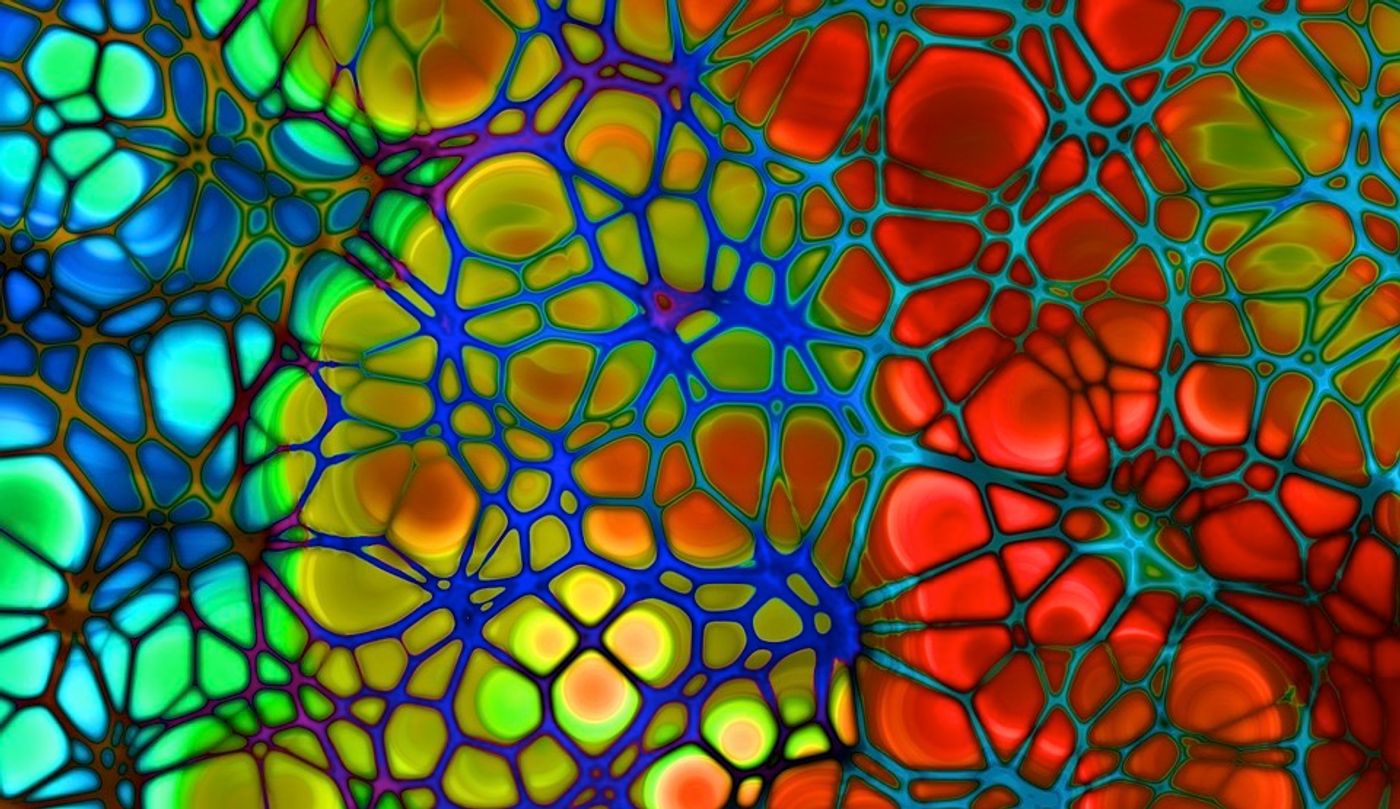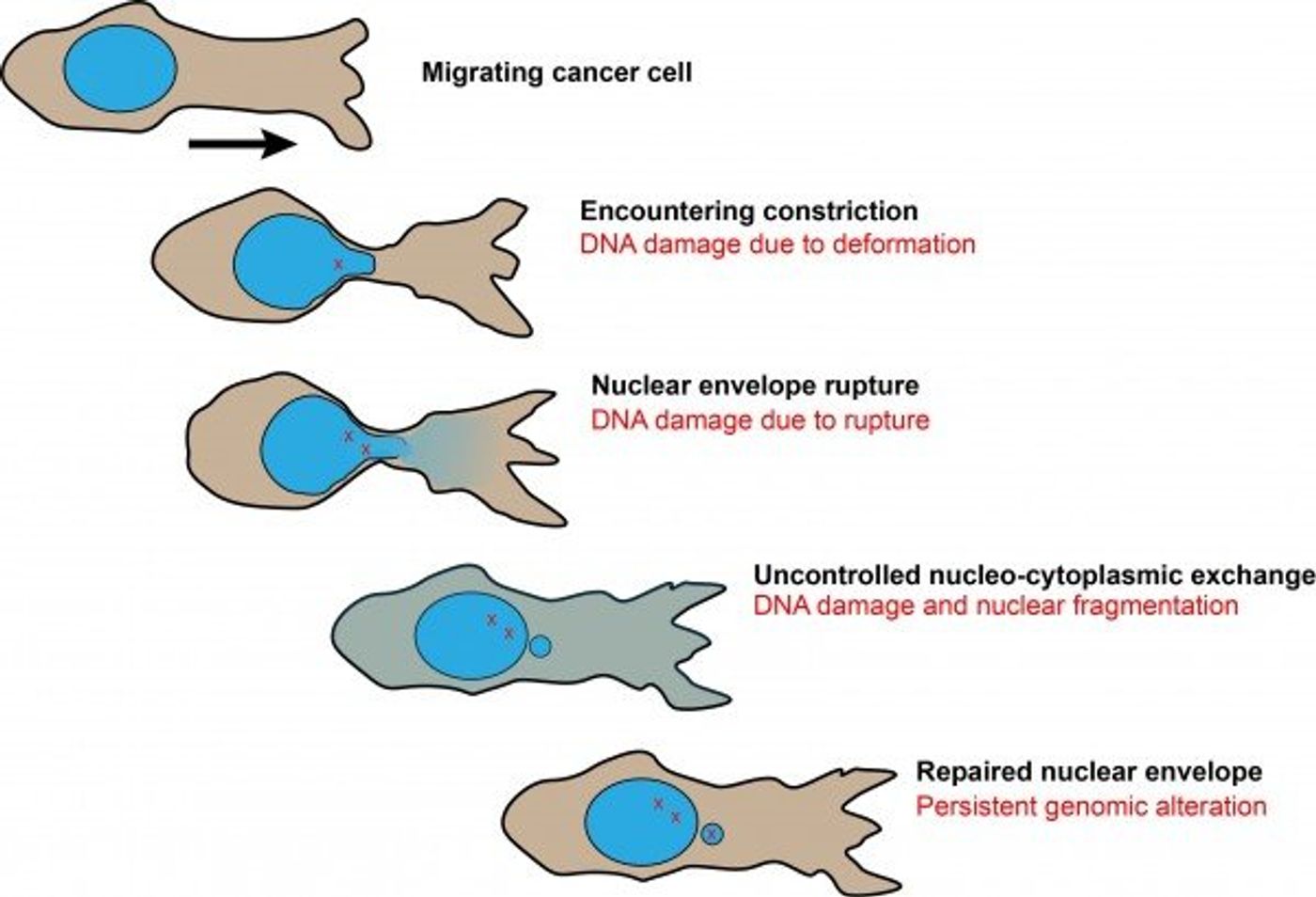When cells migrate, they sometimes have to squeeze themselves through tiny openings. The mechanical stress of this can rupture the cell membranes, causing cells to die. But in the case of cancer, researchers found that these cells can self-repair while they acquire new mutations. Understanding how these events happen could lead to new treatment and diagnostic solutions for cancer metastasis.
The human circulatory system is complex and highly intricate. To move around, cells often pass through vessels of varying diameters. When these passages get too narrow, it can deform the structural integrity of the cells – leading to the rupture of the nuclear membrane. Using fluorescent proteins that tag cellular structures in the nucleus, the team observed the breakdown of the nuclear envelope when cells were being squeezed. This event caused the contents of the nucleus to spill into the cell body.
Cell death is normally inevitable after such catastrophic events, but cancer cells seem to be more resilient than healthy cells at surviving damages. In fact, researchers at Cornell University found that about 90 percent of cancer cells have the ability to self-repair after such events.
"We're still trying to find out if there are differences between cells, and a lot of what we see is very similar between normal cells and cancer cells," said Jan Lammerding, associate professor of biomedical engineering at Cornell University and senior study author. Identifying the exact mechanisms of how cancer self-repairs could provide key targeted treatments to stop these processes from occurring.
Another cause for concern is the acquired mutations in newly repaired cancer cells. After such catastrophic events, the cells undoubtedly will sustain DNA damage. And as it fights for survival, what further genetic alterations are incorporated into the cancer cells, and how do these mutations persist to exacerbate its proliferation?
“You have so many migrating cells," Lammerding said, "that even if a small fraction of them picks up a mutation, it means the cancer is evolving. The good part is, this rupturing also makes the cancer cell vulnerable. Most cells in the body stay in place, and it's presumably mostly cancer cells that are moving around. So if we can block the mechanisms that allow them to repair themselves, then we potentially could target metastatic cancer cells."
Cancer cells are exquisitely cunning, and scientists may only be at the tip of the iceberg in knowing its numerous tricks. But this study increases our understanding of how cancer repairs itself for survival, and point to vulnerable pathways that can be exploited for future treatments.
"Now that we kind of know what we're looking for, now that we know the molecular pathways that these work in," said Lammerding. "Could we then specifically target invasive cancer cells and not have the sledgehammer that hits everything?"
Additional source:
Cornell University press release










